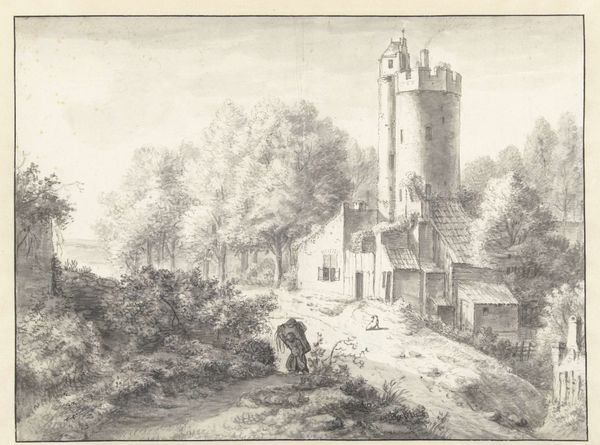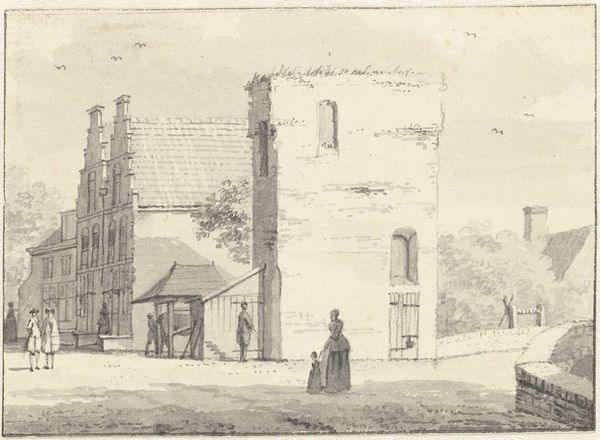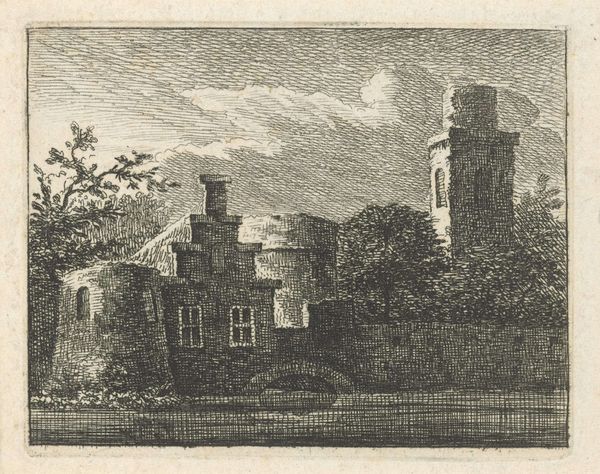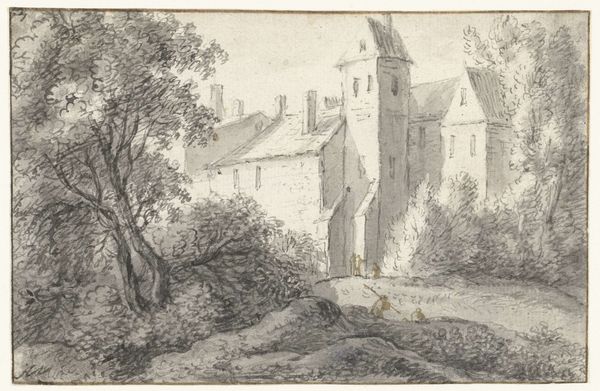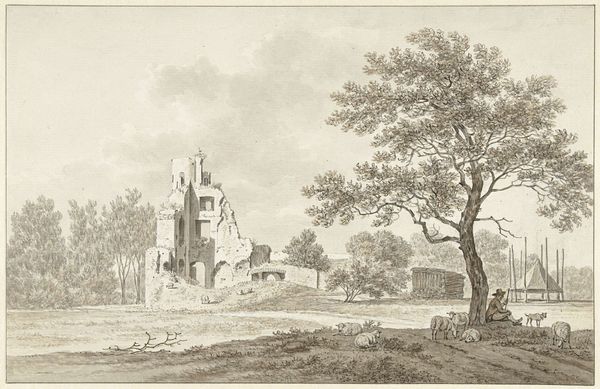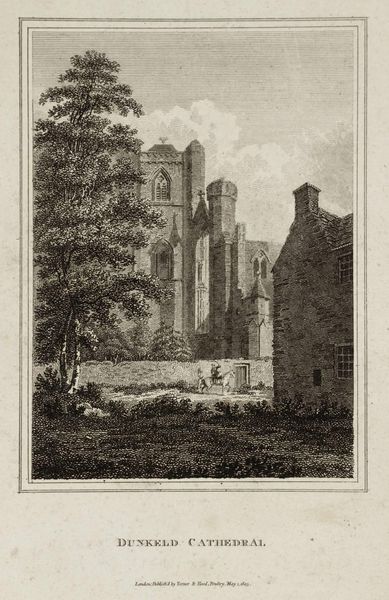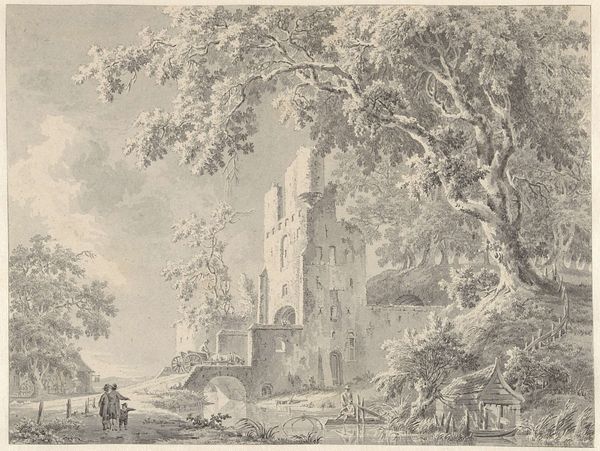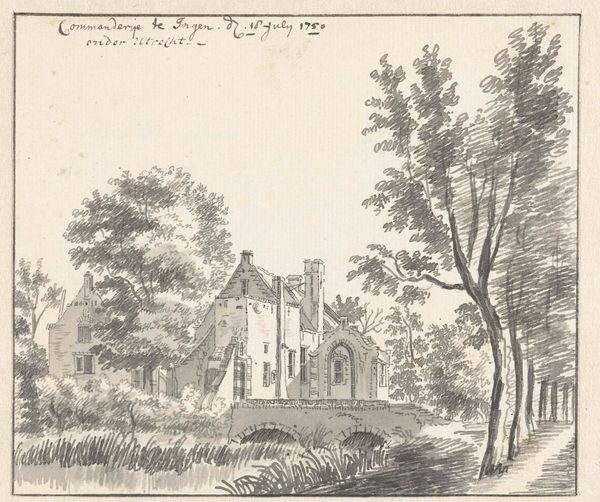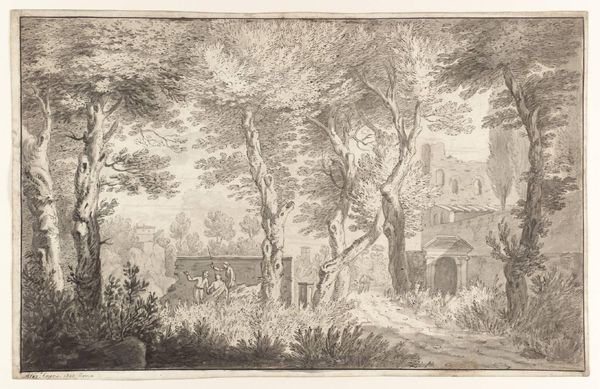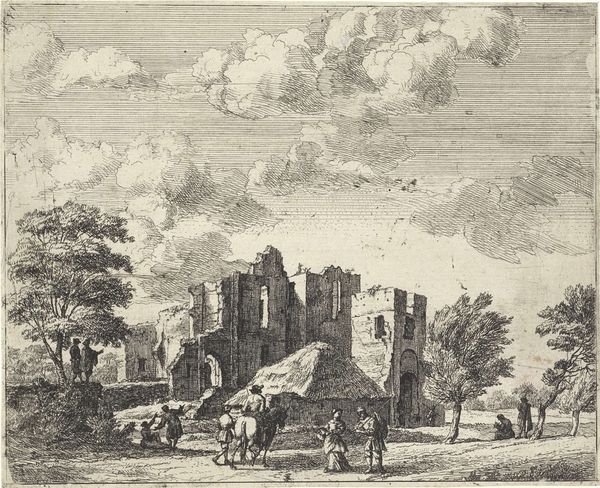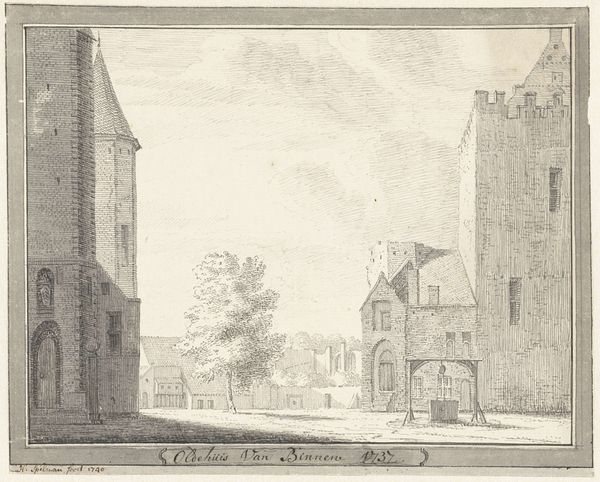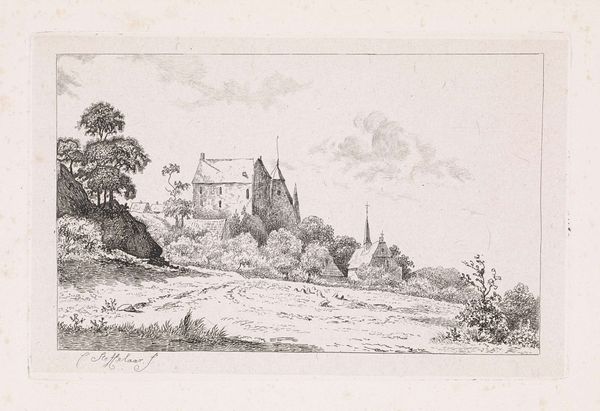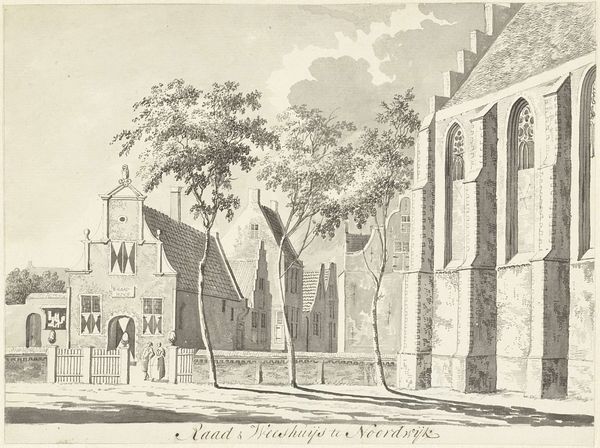
Dimensions: height 132 mm, width 196 mm
Copyright: Rijks Museum: Open Domain
Curator: Hendrik Tavenier's "Een gezicht op een ruine," dating roughly from 1744 to 1807, presents a stark yet compelling scene. The work, rendered in ink, captures an architectural ruin amidst a natural setting. Editor: The initial impact is undeniably somber, isn't it? The skeletal remains of what was clearly a grand structure loom against the soft background. It speaks of decay, the inexorable triumph of time and nature over human ambition. Curator: Absolutely. This aligns perfectly with the Romantic sensibilities of the time, a fascination with ruins as potent symbols of the past and the ephemeral nature of power. We can examine how this aesthetic ideal shaped political discourses by showing the natural world reclaim architectures of the dominant power, exposing their vulnerabilities. Editor: Precisely! And looking closer, observe the visible strokes of ink - one can appreciate the materiality of labor gone into illustrating this Romantic view of temporality, reflecting on who had the resources and time to create a landscape piece during a pre-industrial moment, and thus shape the popular discourse on history. Curator: True. Moreover, in many ways Romanticism was driven by the bourgeoise anxieties as old orders started failing to social and economic progress, marking an intersection between the identity and its material anxieties with societal changes that produced art of that time. This reminds me of cultural critic Theodor Adorno! Editor: Tavenier gives us a snapshot into this cultural production. Here’s labour depicted at the base, juxtaposing with an artistic labor; note that landscape work at this time still represented an element of "high art," and the ruin perhaps alludes to lost materials of the feudal structure replaced by new resources for art like itself. Curator: That is incisive. I can’t help but see the decline in structures reflected against power constructs such as masculine identity. Here we see traditional ideas about labor are reevaluated and perhaps questioned. We are definitely facing changing roles within gender and socio-economic structures. Editor: Right, we are looking at what materials we produce but how are they translated in visual culture; whose narratives do they perpetuate or challenge, in that moment. And to consider who has access and how this can make way to other narratives. Curator: Indeed. Seeing these intersectional aspects enhances our interpretation to grasp those meanings. Editor: Well, examining material means allows the exploration of complex questions. It broadens what this piece is trying to communicate to those that can participate, and those that don't have any way in, it shows a little. Curator: Looking closely like this underscores the enduring relevance, I think, to cultural debates of past times reflected and transformed within present conditions, but never disconnected from it. Thank you for sharing insights. Editor: Of course; materiality offers concrete ground. It leaves you thinking.
Comments
No comments
Be the first to comment and join the conversation on the ultimate creative platform.
